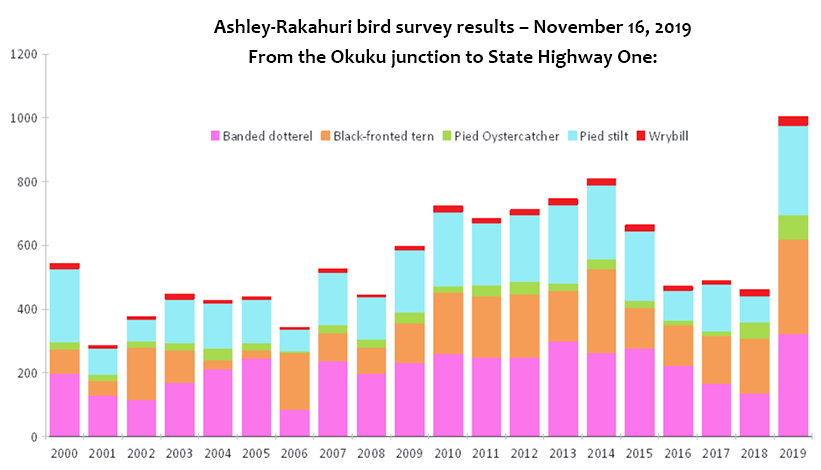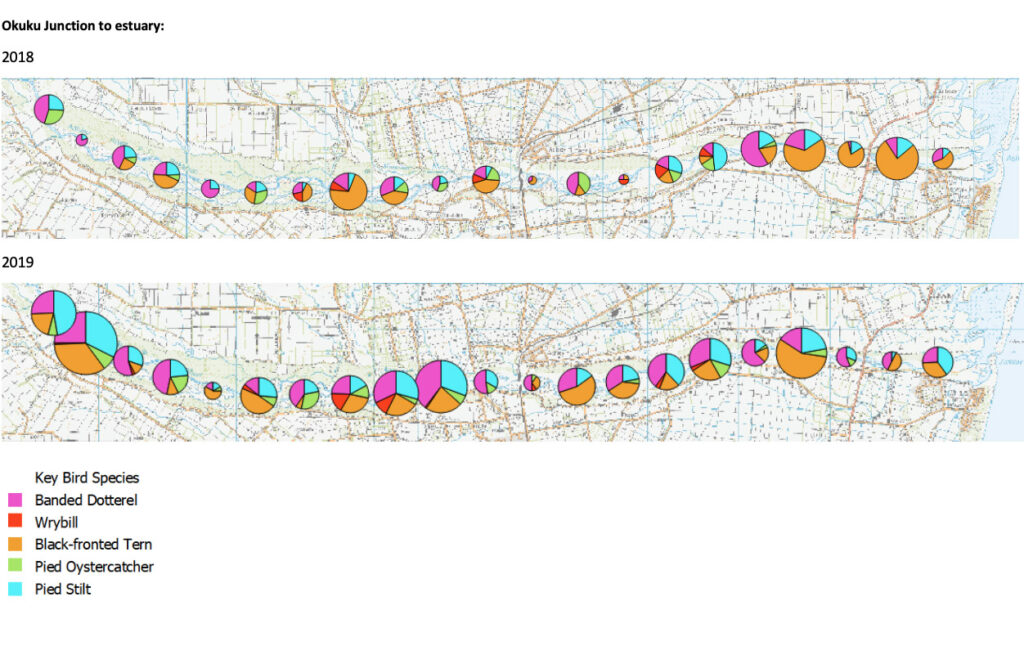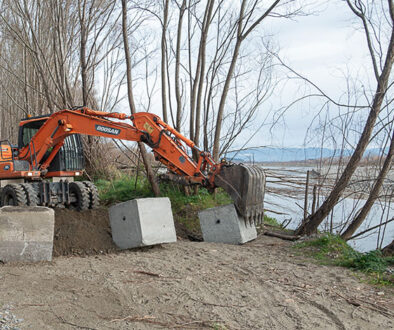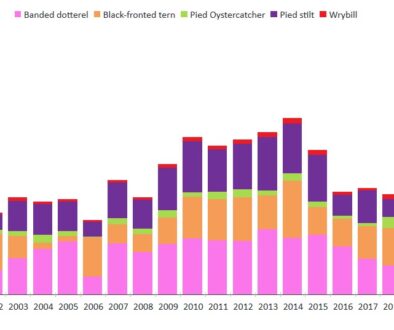Annual survey (Nov 16, 2019) results
So what was the outcome? The major focus is on six species – the wrybill (ngutupare), black-fronted tern (tarapiroe), black-billed gull (tarapuka), banded dotterel (pohowera), pied stilt (poaka) and the S. Island pied oystercatcher (torea). Those of us who had walked the river prior to the survey suspected that bird numbers would be up. And we were right – much more so than we expected. The numbers of all species were records within the period since we started in 2000. The total number of birds of each species counted between the Okuku junction and SH1 was 5,350. This number was considerably boosted by there being two large colonies of black-billed gulls – a total of 4,097 mainly counted from drone photographs. In the past, there has never been more than one such colony, and for over half of our surveys there have been no colonies present at all.
The reason for the high numbers is likely to be largely due to the riverbed being relatively free of weeds, plus regular floods in the Waimakariri River may have forced some species to relocate (almost certainly the case for the black-billed gulls). It is also reasonable to assume that the Group can claim credit for its many years of management, primarily aimed at controlling predators, reducing human disturbance and removing weeds.
Many thanks to survey organiser, Bev Alexander, and all those who assisted on November 16.
A full report on the survey will be completed in the near future – during which all numbers will be thoroughly re-checked. Grant Davey has presented our survey results in the attached figures.





